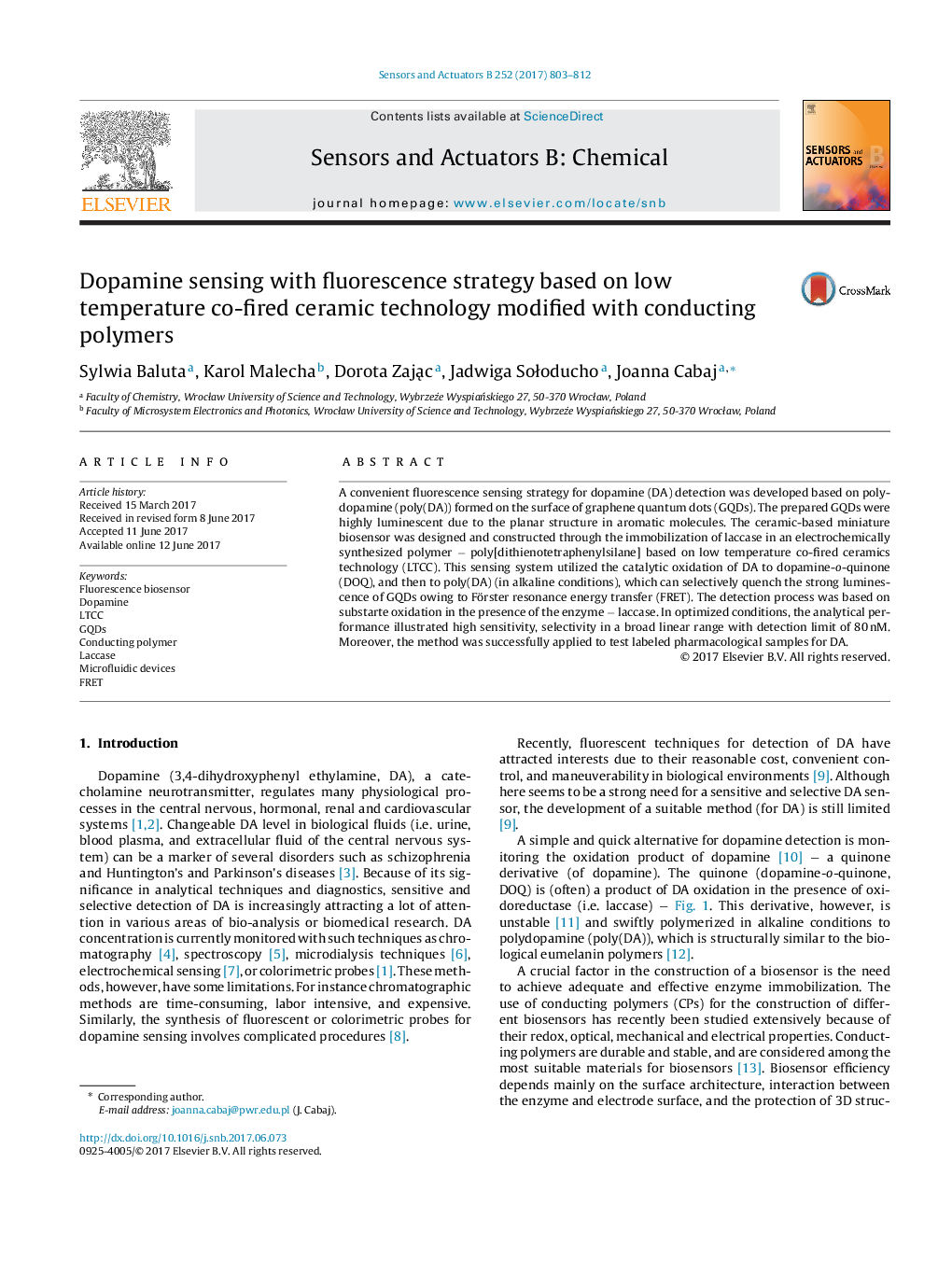| Article ID | Journal | Published Year | Pages | File Type |
|---|---|---|---|---|
| 5009135 | Sensors and Actuators B: Chemical | 2017 | 10 Pages |
â¢A convenient fluorescence dopamine-sensing strategy based on polydopamine formed on the surface of graphene quantum dots was developed.â¢Ceramic laccase-based biosensor for permanent detection of dopamine (using Förster resonance energy transfer) was built.â¢Co-fired ceramic modules were modified with conducting polymer and laccase.â¢Analytical performance illustrated high sensitivity, selectivity in a broad linear range of constructed tool with detection limit of 80 nM.â¢The method was successfully applied for dopamine injection test with labeled pharmacological samples.
A convenient fluorescence sensing strategy for dopamine (DA) detection was developed based on polydopamine (poly(DA)) formed on the surface of graphene quantum dots (GQDs). The prepared GQDs were highly luminescent due to the planar structure in aromatic molecules. The ceramic-based miniature biosensor was designed and constructed through the immobilization of laccase in an electrochemically synthesized polymer â poly[dithienotetraphenylsilane] based on low temperature co-fired ceramics technology (LTCC). This sensing system utilized the catalytic oxidation of DA to dopamine-o-quinone (DOQ), and then to poly(DA) (in alkaline conditions), which can selectively quench the strong luminescence of GQDs owing to Förster resonance energy transfer (FRET). The detection process was based on substarte oxidation in the presence of the enzyme â laccase. In optimized conditions, the analytical performance illustrated high sensitivity, selectivity in a broad linear range with detection limit of 80Â nM. Moreover, the method was successfully applied to test labeled pharmacological samples for DA.
